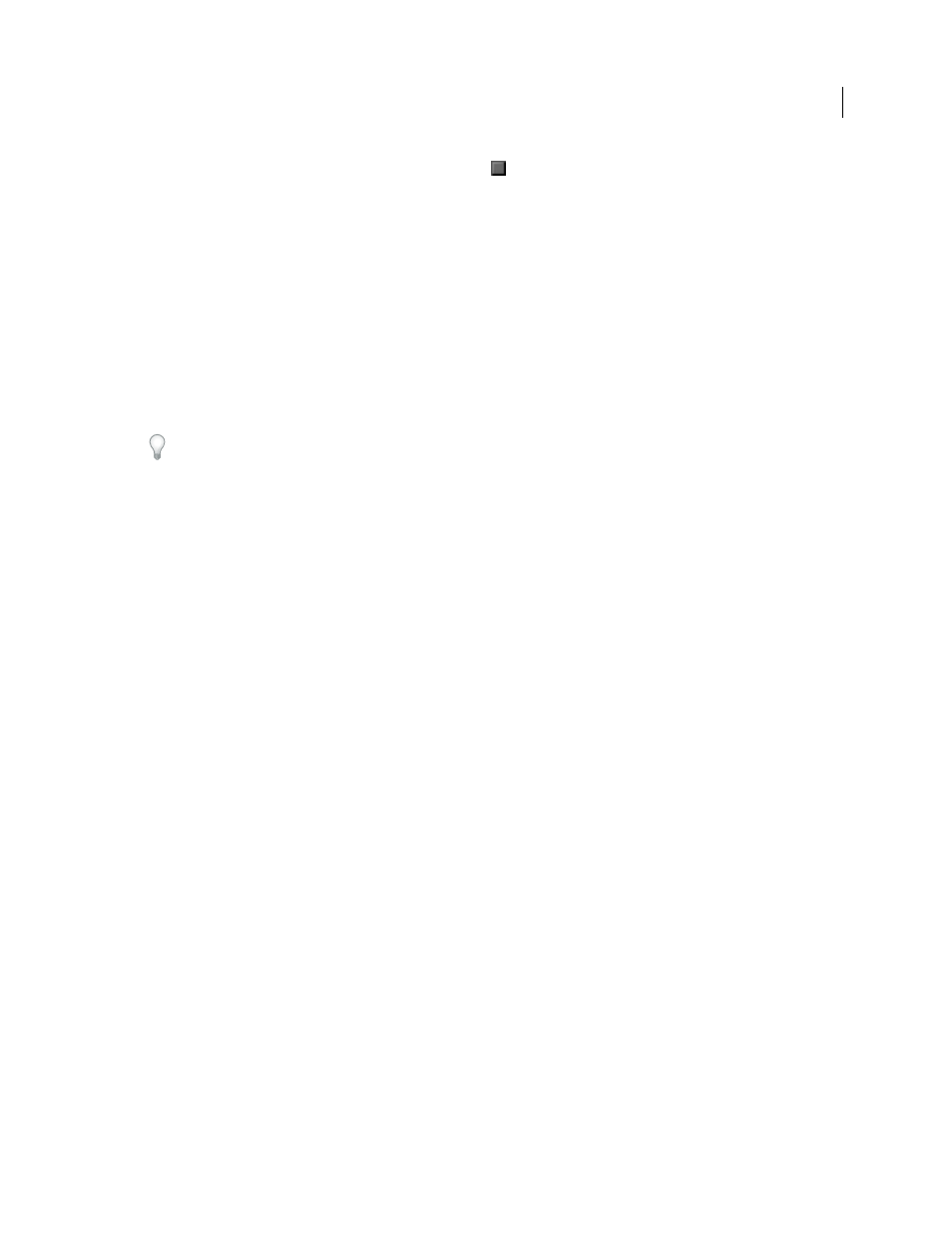Motion tracking controls – Adobe After Effects CS4 User Manual
Page 274

268
USING AFTER EFFECTS CS4
Animation and keyframes
Last updated 12/21/2009
If the tracking ceases to be accurate, click the Stop button
, correct the problem as described in “
” on page 272, and resume analysis.
7
When you are satisfied with the position of the feature region and attach point throughout the track, click the Apply
button to apply the motion to the specified target.
After Effects creates keyframes for the target layer.
When tracking position and applying this position data to a target, you can choose to apply only the x (horizontal) or
y (vertical) component of motion. For example, you can apply the tracking data to the x axis to make a speech bubble
(the motion target) remain at the top of the frame even when the actor (the motion source) moves downward.
•
X And Y (default) allows motion along both axes.
•
X Only restricts the motion target to horizontal movement.
•
Y Only restricts the motion target to vertical movement.
To bypass the Motion Tracker Apply Options dialog box and use the previous setting, hold Alt (Windows) or Option
(Mac OS) as you click Apply.
Note: You can change the order of steps 1-3 by first selecting the property to which to apply the tracking data (Scale,
Position, or Rotation) and then choosing Animation > Track This Property. After Effects prompts you to choose the layer
to use as a motion source.
When you stabilize a layer, the compensating motion may itself cause the layer to move too far in one direction,
exposing the background in the composition or moving action out of the action-safe zone. You can correct this with
a small change in scale for the layer. Find the frame where the problem is most severe, and then increase or decrease
the scale of the layer until the problem is resolved. This technique adjusts the scale for the duration of the layer; you
can also animate scale to correct this problem by zooming in and out at different times.
More Help topics
Motion tracking controls
You set up, initiate, and apply motion tracking with the Tracker panel.
Motion Source
The layer that contains the motion to track.
Note: Layers are available in the Motion Source menu if they have source footage items that can contain motion or if
they are composition layers. You can precompose a layer to make it available in the Motion Source menu.
Current Track
The active tracker. You can modify settings for a tracker at any time by selecting the tracker from this menu.
Track Type
The tracking mode to use. The motion tracking itself is the same for each of these modes; they differ in the
number of track points and how the tracking data is applied to the target:
•
Stabilize tracks position, rotation, and/or scale to compensate for movement in the tracked (source) layer. When
tracking position, this mode creates one track point and generates Anchor Point keyframes for the source layer.
When tracking rotation, this mode creates two track points and produces Rotation keyframes for the source layer.
When tracking scale, this mode creates two track points and produces Scale keyframes for the source layer.